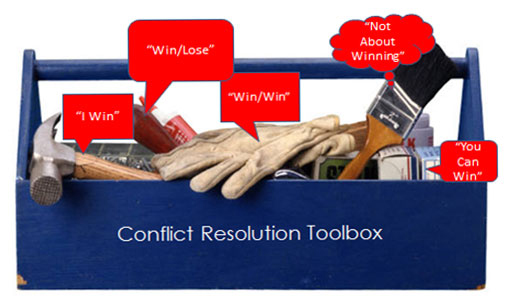 Constructive conflict is an essential part of any team, group, or partnership dynamic. If people do not disagree or come to the table with a variety of perspectives and their unique set of values, battles would eschew, new ideas would not flourish, and creativity would be stifled.
Constructive conflict is an essential part of any team, group, or partnership dynamic. If people do not disagree or come to the table with a variety of perspectives and their unique set of values, battles would eschew, new ideas would not flourish, and creativity would be stifled.
When facilitating team building in a workplace setting, I often use the Thomas-Kilmann Conflict Mode Instrument as a data-driven jumping off point. The TKI is easy to administer and interpret, and powerful in the feedback it provides.
The instrument measures the relationship between one’s level of cooperation (that is how ready are you to satisfy the concerns of others while settling the conflict) and how assertive you are (wanting your needs met or just win), and then depending on the combination, classifies into one of five modes. These modes run from Avoiding (uncooperative) thru Accommodating, Compromising, Competing (very assertive and uncooperative), to Collaborating (assertive and cooperative).
No one mode is better than another as long as it is appropriate for the situation. This is why a choice of approaches is such a powerful tool.
Avoidance: On first glance, avoidance (“it’s not about winning”) might seem to be a poor choice and, in fact, it can build resentment, damage relationships, and delay decisions. However, what if avoiding a conflict reduces your stress, keeps you out of the politics, and buys you time for a more opportune moment? Handy tool for your box.
Accommodation: “I’ll let you win this time,” can buy you allies for another battle, restore harmony in times of conflict, and help everyone move forward. Used too often or at the wrong time, it may force you to sacrifice too much and lose any advantage you might have, or the respect of others who see you as a wimp. Still, a helpful skill.
Compromising: We’ve all had to do a bit of this “you win some/you lose some” situations. The negative is you give up something to gain what is important, often leading to a consensus decision-making that may be harmonious but not necessarily optimal. It can be practical, expedient, and appear fair but often doesn’t require the drilling down a good debate would demand. But you see its value, yes?
Competing: Probably the easiest of modes to spot and the least understood. In team building, members often only see the negative side of competition — tests relationships, can deadlock process, doesn’t require input or worry about people-centered outcomes. On the other hand, if you truly believe in something, it may just be imperative that you take on a “win at any cost” mentality. I caution that often the missions that people compete on do not fall into these value-based conflicts and tend to be more ego-based needs and entitlements. Nevertheless, used carefully and strategically it holds an essential position on the list of choices.
Collaborating: “Win-win,” generally seen as the ideal. Both parties leave the table believing they have been heard and that the issues have been resolved to the satisfaction of all. And, this is probably true. Collaboration, because it considers all sides, fosters quality decisions; requires interaction and communication, and in the end, it generally feels good. It does demand openness and transparency that in the wrong hands can make people vulnerable. It’s also time consuming and may not be an efficient way to use time. It has a draining quality to it, especially for those who are isolative or decisive by nature. Despite its demands and challenges, it is an essential tool and probably one you should consider first.
After looking at the advantages and disadvantages of the five conflict handling modes — avoidance, accommodating, compromising, competing, and collaborating, I’m sure you can see each can play an important role in coming to a resolution. Knowing they exist, practicing with intent each one, testing and measuring their success provides you with an arsenal of choices and opportunities.
Leave a Reply